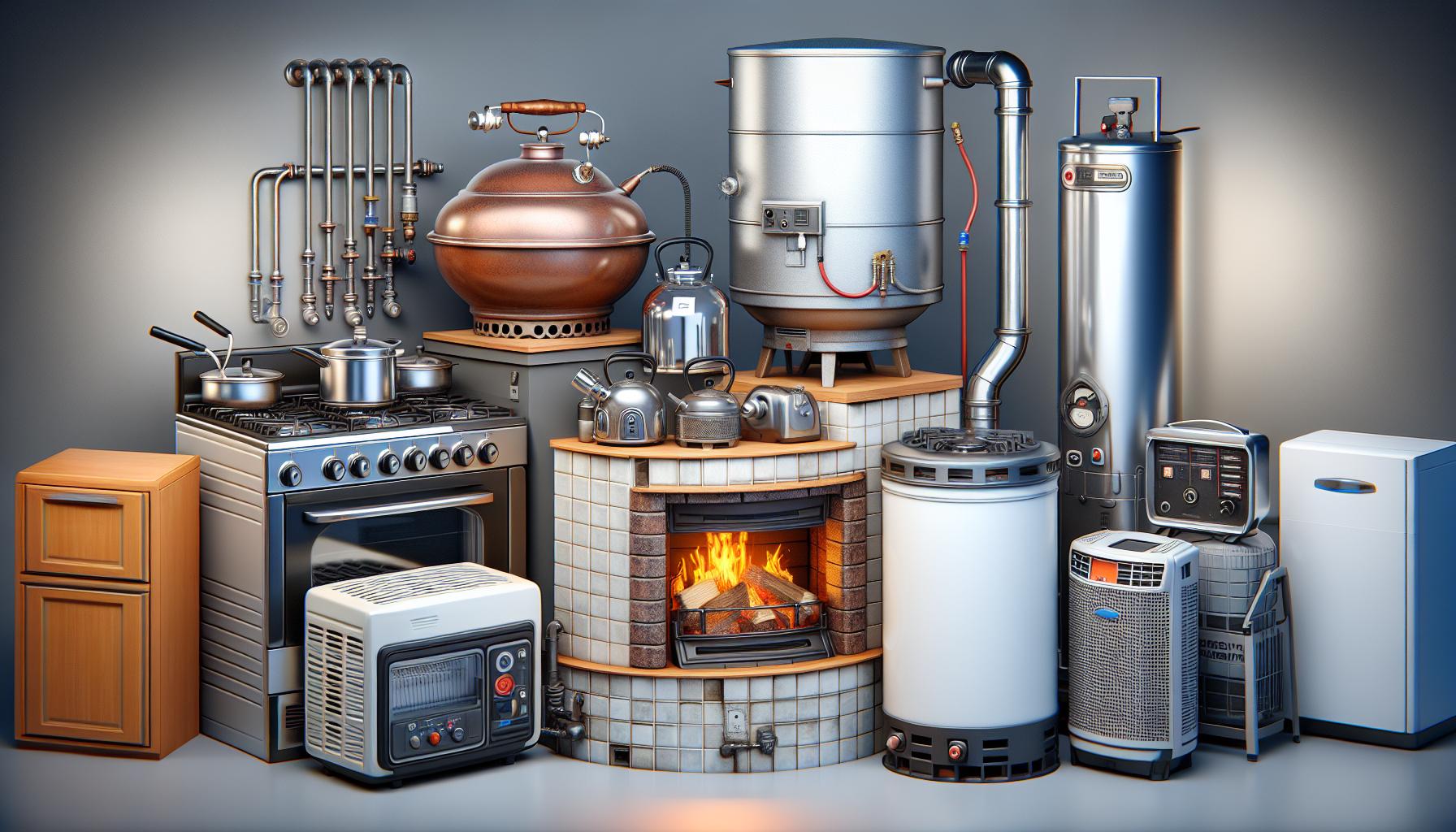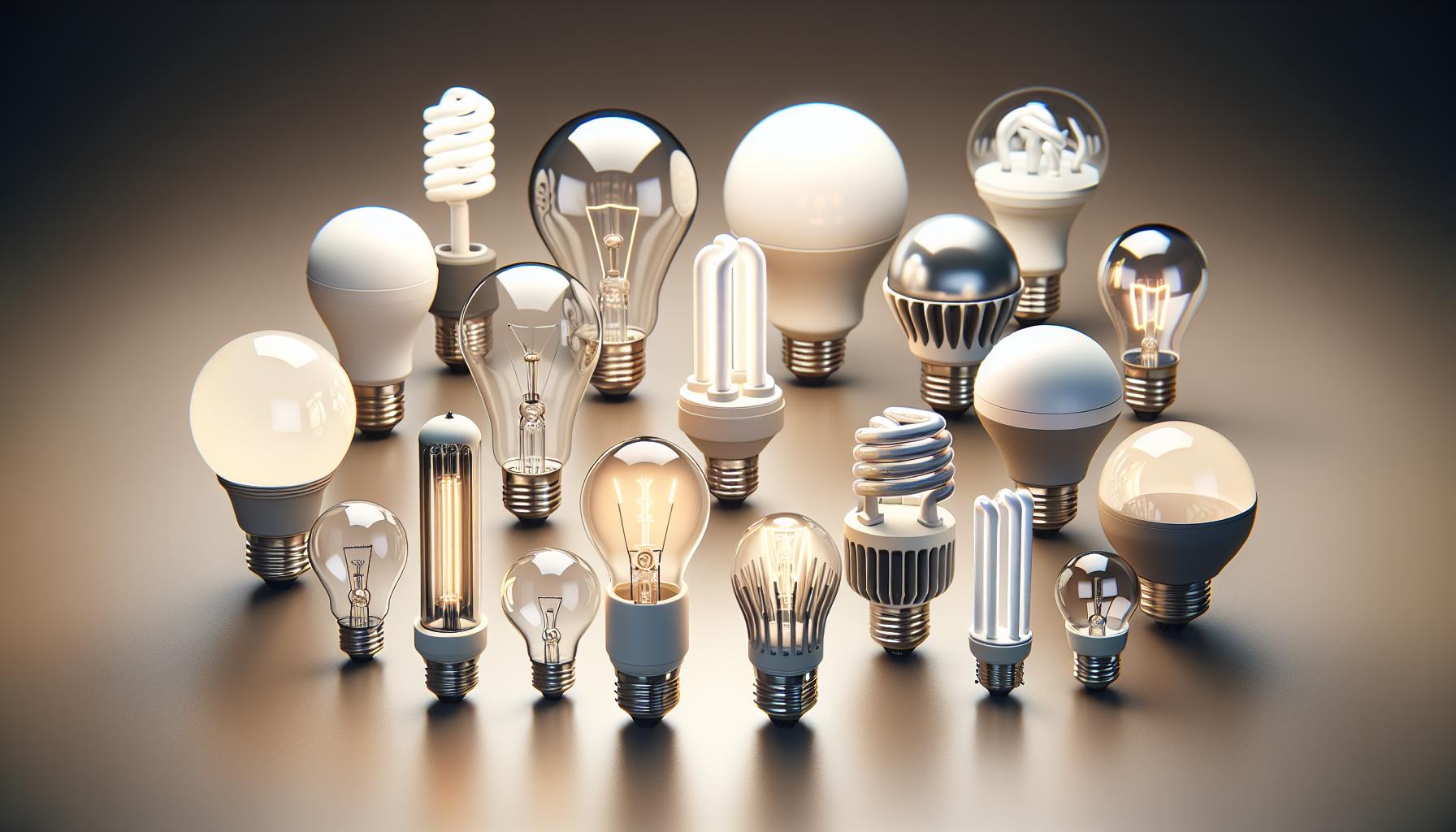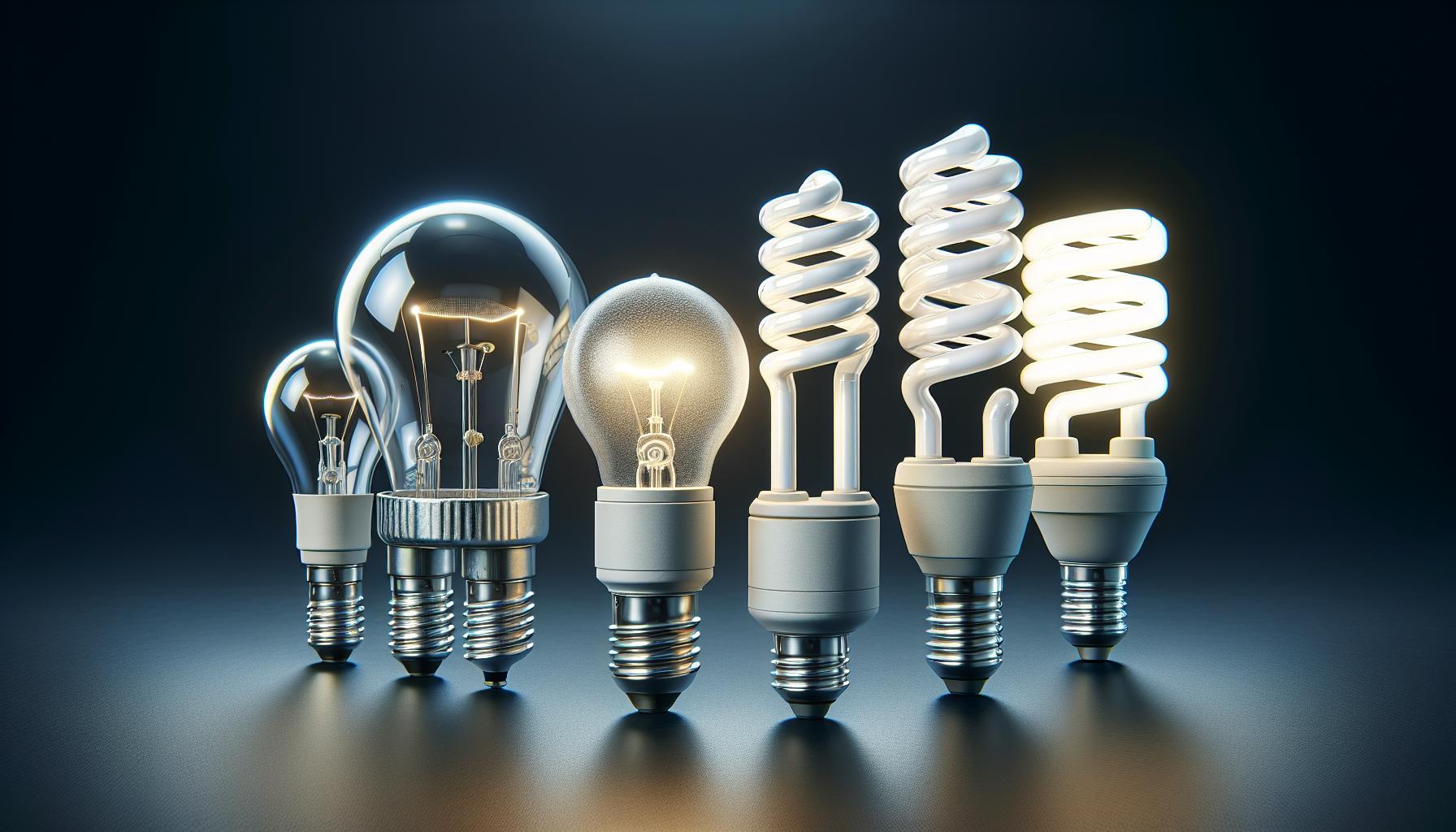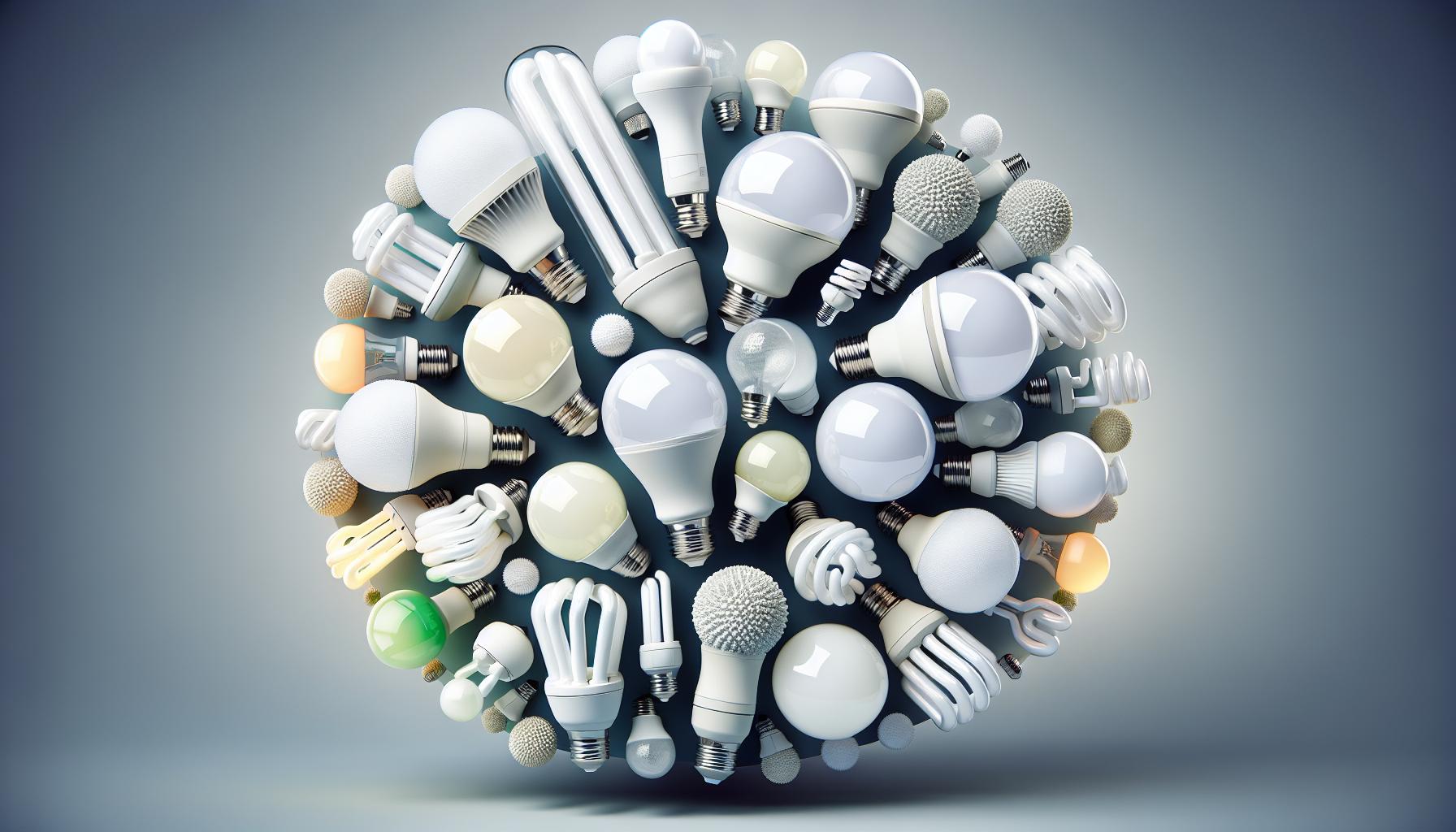You’ve probably heard about the dangers of carbon monoxide, but have you ever stopped to wonder if the light bulbs in your home could be a hidden source? It’s a question worth asking, especially when you’re trying to keep your living space safe and healthy.

Let’s dive into the facts and bust some myths. You’ll find out whether flipping that switch could be causing more harm than good. Stay tuned as we shed light on the connection between light bulbs and carbon monoxide.
What is carbon monoxide?
As your go-to lighting and home DIY aficionado, it’s crucial for you to understand what carbon monoxide (CO) is. Carbon monoxide is a colorless, odorless, and tasteless gas that results from the incomplete combustion of various fuels, including coal, wood, charcoal, oil, kerosene, propane, and natural gas. In your journey to ensure that every nook and cranny of your home sparkles with the right light, taking a moment to factor in safety measures against CO is key.
Imagine this: your house is a stage, and the various appliances are actors. While these appliances play their part in your daily comfort, they can unintentionally produce CO, especially if they’re not functioning correctly. You’ve got your central heating systems, generators, and even stoves silently contributing to this gas that could be harmful to your health.
Here’s where it gets tricky, the point where your passion for illumination crosses paths with safety. Although light bulbs are not typically associated with producing carbon monoxide, especially modern LEDs or fluorescents, understanding the broader picture of CO sources can be a lifesaver. Inhalation of high levels of carbon monoxide can lead to toxic effects on the human body. Cells can’t get enough oxygen to function properly, which underscores the importance of proper maintenance and ventilation of all fuel-burning appliances.
The Impact of Carbon Monoxide on Your Health
Your well-being is paramount, and recognizing the signs of CO poisoning could frankly be a bright idea. The symptoms are often described as ‘flu-like’ and include headaches, dizziness, weakness, upset stomach, vomiting, chest pain, and confusion. Remember, if a lightbulb was responsible for these symptoms, you’d change it in a heartbeat, so don’t overlook the potential of CO producing appliances to disrupt your health.
Being in the know about CO can empower you to keep your living space not just shining, but also safe. There’s no better time to double-check your appliances, install CO detectors, and ensure proper ventilation in spaces where fuel is burned. Your sanctuary deserves that level of attention, and your expertise in DIY can make it happen.
Sources of carbon monoxide in the home
When you’re delving into the world of home improvement and DIY projects, understanding the potential hazards is just as important as the aesthetic or functional improvements you’re aiming to make. You’ve considered the light sources in your home, questioning whether those bulbs have anything to do with carbon monoxide (CO) production. Beyond the illumination they provide, most modern bulbs won’t contribute to CO levels. Yet, many other everyday items might just be the culprit.
In your mission for a safer home, you’ll need to keenly assess appliances that burn fuel. This is where CO, the stealthy villain, often originates:
- Gas Stoves: A kitchen staple for cooking enthusiasts, yet when used improperly or left unmaintained, they can emit CO.
- Water Heaters: Usually tucked away and forgotten, these can be a significant source if not vented correctly.
- Fireplaces: Whether they’re wood-burning or gas-powered, inadequate ventilation can lead to CO buildup.
- Furnaces: They keep you cozy, but they can also pose a risk if not regularly inspected.
- Generators: Essential during power outages, but incredibly dangerous if used indoors or close to windows and doors.
Each of these can be a part of your CO saga if you’re not vigilant. Regular maintenance and proper use are key to preventing CO leaks. Always refer to and follow the manufacturer’s instructions for your appliances, ensuring they’re serviced by a professional as recommended.
Fascination with light has led you through the maze of LED efficiencies and the warmth of incandescent bulbs. Now you know that your interest shouldn’t only be about lumens and color temperatures but also about the safety and integrity of your environment. So while you’re crafting the perfect lighting ambiance, make sure you have the backup of a trusty CO detector because when it comes to carbon monoxide, even the most seasoned DIY enthusiast can’t detect its presence without a little technological help.
Understanding light bulbs
Light bulbs aren’t just a part of your daily life; they’re a passion, especially if you’re into home DIY projects and innovative lighting solutions. But it’s essential to understand their operation and whether they have any role in carbon monoxide production.
« What Is the Best Light Bulb for Home Use? Illuminate Every Room Perfectly
When Do Light Bulbs Expire? Spot the Tell-Tale Signs Now »
Traditional incandescent bulbs work by heating a thin filament until it glows. The glow you get warms the room slightly but isn’t responsible for carbon monoxide because there’s no combustion involved. It’s the burning—in complete or incomplete form—that releases carbon monoxide, and incandescent bulbs just don’t burn.
Moving to halogen bulbs, you’re looking at a variant of incandescent lighting with a bit more efficiency. These bulbs contain a gas that helps increase light output and life span. Still, like their incandescent cousins, halogen bulbs don’t emit carbon monoxide due to the lack of combustion in their operation.
Compact Fluorescent Lights (CFLs) and Light Emitting Diodes (LEDs) are the more modern choices for home lighting. CFLs, work by driving an electric current through a tube containing argon and a small amount of mercury vapor. This generates ultraviolet light that in turn causes a fluorescent coating on the inside of the tube to emit visible light. LEDs, on the other hand, pass current through a semiconductor, which creates light without significant heat. Neither of these energy-efficient options produces carbon monoxide because they don’t burn fuel.
When you’re dabbling in your next home improvement project, keep in mind that while light bulbs don’t contribute to carbon monoxide levels in your home, the fixtures and switches you choose can heavily impact the ambiance and efficiency. Light fixtures can influence the dispersion and intensity of light, while dimmer switches offer control over brightness—neither of which, of course, have any effect on carbon monoxide production.
Remember, when choosing light bulbs for your home, consider the type that best fits your need for efficiency, brightness, and color temperature. Choose wisely and light up your world safely, weaving your interest in lighting into the safe fabric of your home environment.
Can light bulbs produce carbon monoxide?
In your journey of creating a safe and vibrant home, understanding the nuances of everyday items like light bulbs is essential. As a lighting aficionado who loves a good home DIY project, you might sometimes worry about the unseen dangers like carbon monoxide. Let’s shed some light on whether your bulbs could be a silent threat.
First off, it’s key to note carbon monoxide is produced through combustion. This is a process where a fuel source burns with oxygen, releasing energy, and sometimes, harmful byproducts. With this in mind, you can breathe a sigh of relief because most household light bulbs operate without combustion, making them an unlikely source of carbon monoxide.
Incandescent and halogen bulbs get their glow from an electric current heating a tungsten filament until it’s hot enough to shine. No burning, just a cozy warmth that lights up the room. Similarly, when it comes to CFLs and LEDs, they’re practically the do-gooders of the lighting world. These efficient bulbs use electrical currents and semiconductors to produce light, bypassing any need for flames or fuel.
While these bulbs are safe from a carbon monoxide standpoint, they’re not without their precautions. CFLs, for example, contain a trace amount of mercury, which requires careful handling and disposal. LEDs are much friendlier in this aspect, but they too demand proper waste management to avoid electronic waste.
For your home projects, understanding the properties of the bulbs you choose can enormously impact your home’s safety and ambiance. With light emitting warmth without the risk of combustion, you can focus more on choosing the right color temperature and brightness. Remember, pairing your lighting choices with a working carbon monoxide detector is a surefire way to keep your DIY haven secure and well-lit.
Debunking common myths
When you’re tackling home DIY projects, lighting is key, and so is knowing the facts. You might’ve heard a myth or two about light bulbs and their potential to emit carbon monoxide (CO). Let’s shed some light on these common misconceptions.
Myth 1: All Light Bulbs Can Produce Carbon Monoxide
Despite rumors, most household light bulbs, including LEDs and CFLs, simply can’t produce CO because they don’t burn fuel. Earlier on, we walked through how only appliances with incomplete combustion processes, like a malfunctioning furnace or a poorly vented gas stove, are the real culprits behind CO release.
Myth 2: Energy-Efficient Bulbs Are a CO Risk
Energy-efficient doesn’t mean risky. CFLs and LEDs are energy savers and do not pose a CO hazard. While CFLs have a bit of mercury, it’s the mercury—not CO—that’s a concern if the bulb breaks. Make sure to follow proper disposal guidelines to handle this safely.
Myth 3: Dimmer Switches Increase CO Levels
Adding ambiance with dimmer switches does not affect the possibility of CO production. Since these bulbs do not operate on combustion, using a dimmer simply alters the brightness, not the gas byproducts. So relax and set the mood; your air quality will stay just fine.
Myth 4: The Older the Bulb, the Higher the CO Emission
Although old incandescent bulbs do get inefficient with time, they don’t start emitting CO. They may burn out or not shine as brightly, but combustion isn’t part of their function, so age won’t suddenly turn them into a CO source.
As you illuminate your space and choose bulbs that create that perfect glow, you’re now armed with the truth about light bulbs and carbon monoxide. Remember, pairing your lighting choices with a working carbon monoxide detector ensures your DIY paradise remains safe and sound.
How to minimize risks
When it comes to ensuring your home is safe from carbon monoxide, being proactive is key. As a lighting aficionado with a knack for home DIY projects, you understand the significance of both form and function. Here’s how you can minimize any potential risks while indulging in your love for lighting.
Start by regularly maintaining all your fuel-burning appliances. It’s not just about light bulbs; any device that burns gas, oil, wood, or coal should be on your checklist. Ensure that your heating systems, water heaters, and any gas stoves are serviced annually by a qualified technician to prevent malfunctions that could lead to carbon monoxide leaks.
Next, ventilate your home effectively. Whether you’re installing a new light fixture or just going about your day-to-day activities, adequate ventilation is crucial. This means checking that your vents aren’t blocked by furniture or drapes and using exhaust fans to help circulate air.
Invest in carbon monoxide detectors. Place one on every floor of your home, including the basement, and especially near sleeping areas. Test them regularly and change batteries at least once a year.
For those who love the aesthetic appeal of lighting just as much as its practicality, consider the following:
- Choose the right bulb: Opt for LED or CFL bulbs to reduce any potential risks as these do not produce carbon monoxide.
- Proper dimmer switch installation: If you’re using dimmer switches, make sure they’re installed correctly to prevent overheating, which could potentially harm other fixtures and create unnecessary hazards.
- Smart Lighting Systems: Explore smart bulbs and lighting systems which not only offer ambiance and efficiency but also come with the added benefit of being able to control them remotely, reducing the need for constant manual adjustments and checks.
Remember, while light bulbs themselves aren’t a source of carbon monoxide, taking a comprehensive approach to home safety will ensure that your DIY lighting projects illuminate your spaces without casting a shadow of doubt on your peace of mind.
Conclusion
Rest easy knowing that your everyday light bulbs aren’t the culprits behind carbon monoxide production. By choosing LEDs or CFLs and keeping up with regular maintenance of appliances, you’re already on the right track. Don’t forget to install a reliable carbon monoxide detector for peace of mind. Embrace smart lighting solutions and remember that safety and efficiency can go hand in hand in your home.
Frequently Asked Questions
Can light bulbs produce carbon monoxide?
No, most household light bulbs, including LEDs and CFLs, do not produce carbon monoxide as they do not burn fuel.
Are there any carbon monoxide risks associated with energy-efficient bulbs?
Energy-efficient bulbs, such as LEDs and CFLs, do not pose a carbon monoxide risk because they do not involve the burning of fuel.
Can old incandescent light bulbs emit carbon monoxide?
Old incandescent bulbs do not emit carbon monoxide. Their efficiency may decline over time, but they do not produce this gas as a by-product.
Do dimmer switches increase the risk of carbon monoxide production?
Dimmer switches do not increase the risk of producing carbon monoxide when used with light bulbs, as the bulbs themselves do not emit carbon monoxide.
How can I minimize the risks of carbon monoxide in my home?
Minimize the risk by maintaining fuel-burning appliances, ensuring effective ventilation, and installing carbon monoxide detectors. Additionally, opt for LED or CFL bulbs and properly install dimmer switches when applicable.
Is it necessary to have a carbon monoxide detector if I only use LED or CFL bulbs?
Yes, it is still advised to have a working carbon monoxide detector in your home for added safety, as other appliances besides light bulbs may produce carbon monoxide.




